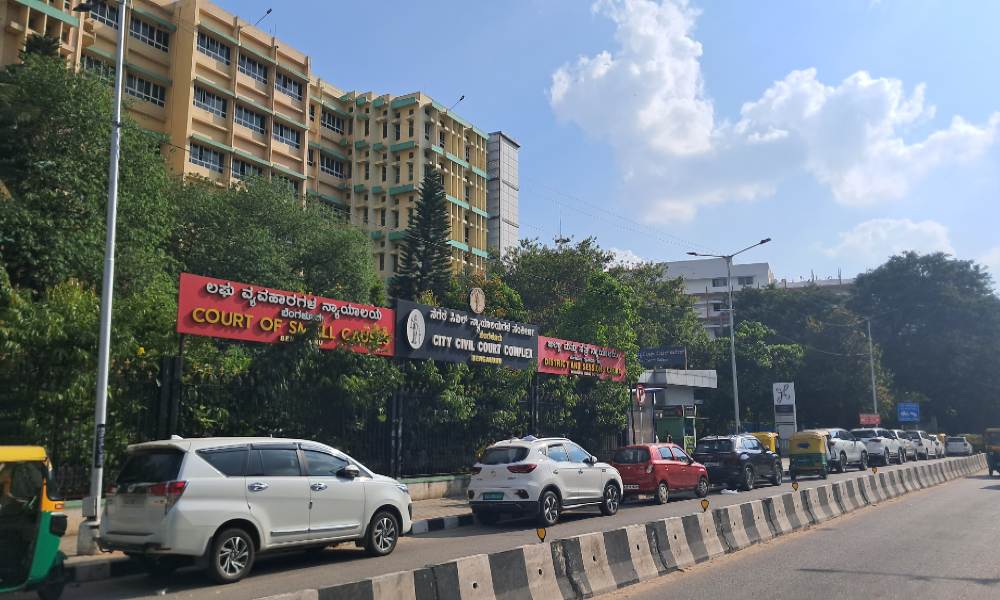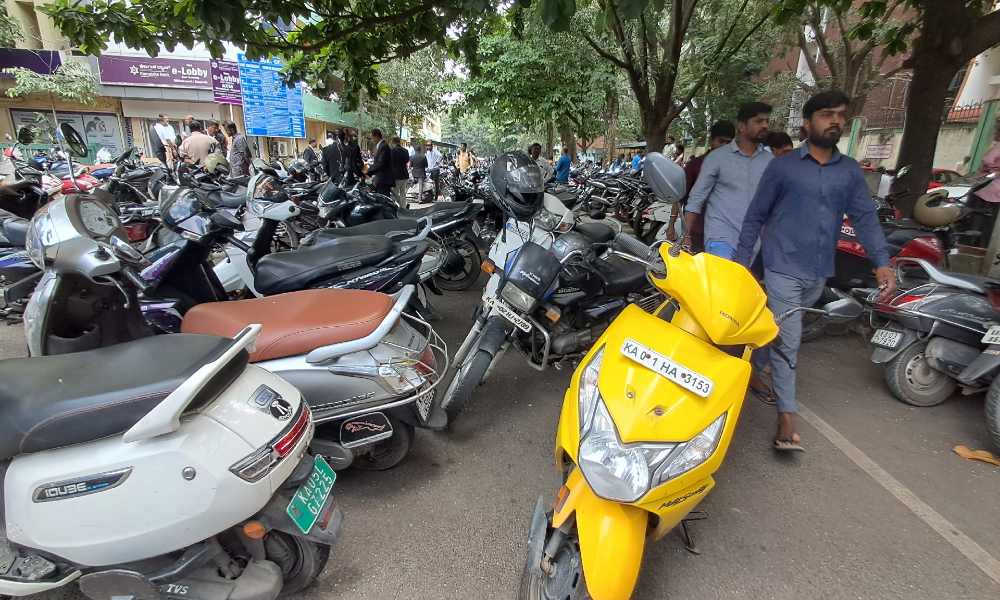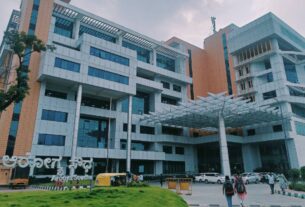Courts in the city face constant parking issues, resulting in lawyers taking up alternative transportation methods.
For many years, visitors to the City Civil Court, Chief Metropolitan Magistrate courts (CMM), and the High Court (HC) in Bengaluru, have had difficulty finding parking. Two-wheelers are frequently parked in a chaotic manner, and lawyers are required to arrive at the court premises early to secure parking spots to avoid missing court proceedings. The new CMM building will address 70 per cent of this parking problem by providing parking spaces in the basement and on the ground floor, high court officials said.
Lawyers complained about the problems faced, but they have found solutions like taking the metro or walking to court. Varshith Reddy, a civil lawyer at City Civil Court, said, “Even though there is a special parking area for lawyers, it can only fit a limited number of vehicles. I used to come to court on my bike, but I stopped because parking problems and traffic jams made me miss some of my case hearings during busy hours, especially around 10:30 to 11 a.m. Now, I take the metro because it’s more convenient and saves me time.”
Anita B, a lawyer at the City Civil Court, said, “Around four to five months back, the Karnataka Bar Council gave lawyers special parking tickets with barcodes to make parking easier, but we still need more space. As the population and the number of people with legal cases increase, the problem keeps coming back. The former president of the Advocates Association of Bengaluru (AAB) suggested to the government that they could use the free space near the Government Arts College for parking, but the government turned down the proposal.”

“Advocates are put to a lot of difficulty because they do not find a parking spot at peak hours and they end up missing their matters. Litigants who come to the high court and the civil court should ideally try to commute through public transport, and they should be asked to take public transport by their respective lawyers. We should have security personnel managing the traffic in the parking area because currently, there’s only one person managing it on the street where the hawkers are,” said senior advocate Lakshmy Iyengar.
She added, “The high court keeps unused old cars in the basement, which is not a good use of space. To solve the problem, the old cars can be removed from the basement, and that space could be allocated for judges’ cars, the entire front area can be given for lawyers and visitors to park. Furthermore, if there was segregation between driver-driven and self-driven vehicles, it would help resolve many issues,”
Reashma, a visitor at the City Civil Court said, “Whether I use the metro or drive to court depends on my daily plans. If it’s urgent or I’m with my family, I cannot opt for public transport. But if I’m going alone, I might take the metro. And if there’s parking available, most people would take the space for parking.”
In 2021, N. V. Ramana, the 48th Chief Justice of India, proposed the creation of the National Judicial Infrastructure Authority of India (NJIAI). Courts across the nation often grapple with a shortage of courtrooms and insufficient access to essential amenities like restrooms, waiting areas, and parking, causing inconvenience for litigants, lawyers, and court staff, resulting in overcrowding and delays in legal proceedings. A notable aspect of the proposal is that NJIAI will function as a central entity responsible for formulating the strategy to plan, establish, develop, upkeep, and oversee operational infrastructure, including parking, for the Indian Court System, including similar setups within all High Courts.

Anant T. Chavan, the registrar of the City Civil Court and CMM, said that they intend to address the parking issues by using a trial-and-error approach and introducing short-term solutions. These measures will aim to reduce inconveniences for advocates, judges, and the general public alike, he said. “We had a meeting today with various experts to discuss the current parking and traffic problems at the court, considering that we receive around 15,000 visitors daily. During the meeting, we devised a plan to establish a disciplined parking system within the premises,” he added.
“We’ll take all the advocates into confidence and explain to them how we’re going to implement the traffic management in the parking layouts. Right now, it is only the floating movement of the advocates that is managing to accommodate the vehicles despite the limited space available. Additionally, we’ll segregate the parking area on priority basis,” said Mr Chavan about the plans for addressing parking issues.
“The lack of parking space and the public unwilling to pay fees are causing major problems,” said Smt. E. Chandrakala, registrar for infrastructure and maintenance at the high court. She added, “In the past, people, especially the shop owners used to park on Avenue Road because it’s the market hub, but now they are parking on the road, which is causing more traffic.”
“The basement and ground floor will be for parking at the new CMM building that is under construction, and this should help solve around 70 per cent of the parking issues people are currently facing there,” she added.
The Registrar also mentioned similar challenges at the high court and their plans to find new land for courts. “We’re facing the same problem at the high court. Now, as we plan for future court expansions, we are keeping in mind the needs of future generations and future litigation, while developing the infrastructure.” She added, “We can’t make the area bigger, and we can’t ignore the growing population and legal cases. So, we’re making plans to shift the courts area-wise. This way, we’ll split the cases and handle them more effectively.” Nevertheless, the high court has not issued an official statement regarding this matter.
Experts say that the implementation of ‘One Ticket-One India’ will likely reduce the city’s parking issues once the metro connectivity is built across the city. “As the demand for parking space is increasing, there is a need to build a multi-level car parking facility capable of accommodating at least 1000 vehicles. Currently, the metro system does not provide sufficient parking space, leading to people parking on roads and in other areas,” said professor M N Sreehari. He added, “Bangalore Metro Rail Corporation Limited (BMRCL) will soon be constructing pay-and-park spaces for metro users. However, the public is hesitant to pay for parking on top of their metro fares, which could cost around Rs 100.”
Mr. Sreehari said that once the metro network expands to cover more areas, people will use it more often, reducing parking problems.




